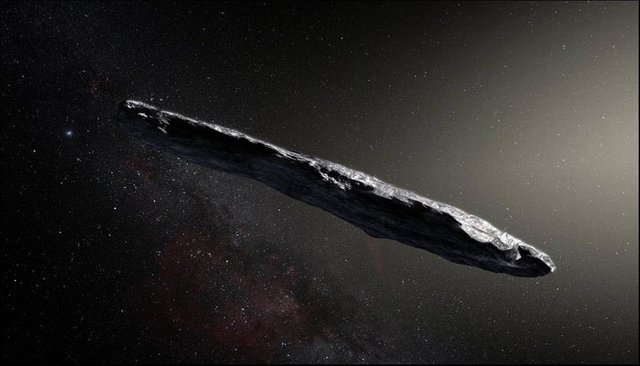Scientists dazzled by solar system's first-known interstellar visitor.

The findings suggest this unusual object had been wandering through the Milky Way, unattached to any star system, for hundreds of millions of years before its chance encounter with our star system.
A research has discovered that an interstellar asteroid that was first spotted passing through in mid-October, is a cigar-shaped object which is quite unlike other asteroids seen in our solar system.
"This thing is an oddball," said Karen Meech of the University of Hawaii's Institute for Astronomy who leads an international team studying this interstellar interloper.
Named ‘Oumuamua' by those who discovered it, the asteroid is highly elongated – up to 400 metres long – perhaps 10 times as long as it is wide.
That aspect ratio is greater than that of any asteroid or comet observed in our solar system to date.
While its elongated structure is quite unusual and surprising, scientists believe that it may provide new clues about how other solar systems formed.
The findings suggest this unusual object had been wandering through the Milky Way, unattached to any star system, for hundreds of millions of years before its chance encounter with our star system.
"For decades we've theorised that such interstellar objects are out there, and now – for the first time – we have direct evidence they exist," said Thomas Zurbuchen, Associate Administrator for NASA's Science Mission Directorate in Washington.
"This history-making discovery is opening a new window to study formation of solar systems beyond our own," Zurbuchen said.
As soon as it was discovered, telescopes around the world were called into action to measure the object's orbit, brightness and colour, including ESO's Very Large Telescope in Chile and the Gemini Observatory, among others.
Urgency for viewing from ground-based telescopes was vital to get the best data.
Combining the images from the FORS instrument on the ESO telescope using four different filters with those of other large telescopes, a team of astronomers led by Meech found that 'Oumuamua varies in brightness by a factor of ten as it spins on its axis every 7.3 hours.
No known asteroid or comet from our solar system varies so widely in brightness, with such a large ratio between length and width.
The most elongated objects seen to date are no more than three times longer than they are wide, the scientists said.
"This unusually big variation in brightness means that the object is highly elongated: about ten times as long as it is wide, with a complex, convoluted shape," said Meech.
"We also found that it had a reddish colour, similar to objects in the outer solar system, and confirmed that it is completely inert, without the faintest hint of dust around it," Meech added.
These properties suggest that 'Oumuamua is dense, comprised of rock and possibly metals, has no water or ice, and that its surface was reddened due to the effects of irradiation from cosmic rays over hundreds of millions of years.
A few large ground-based telescopes continue to track the asteroid, though it is rapidly fading as it recedes from our planet.
NASA said two of its space telescopes (Hubble and Spitzer) are tracking the object.
As of Monday, Oumuamua is travelling about 38.3 kilometres per second relative to the Sun, it added.
Its location is approximately 200 million kilometres from Earth -- the distance between Mars and Jupiter – though its outbound path is about 20 degrees above the plane of planets that orbit the Sun.
The object passed Mars's orbit around November 1 and will pass Jupiter's orbit in May of 2018. It will travel beyond Saturn's orbit in January 2019 and as it leaves our solar system, 'Oumuamua will head for the constellation Pegasus, NASA said.
This unusual object was discovered on October 19 by the University of Hawaii's Pan-STARRS1 telescope.